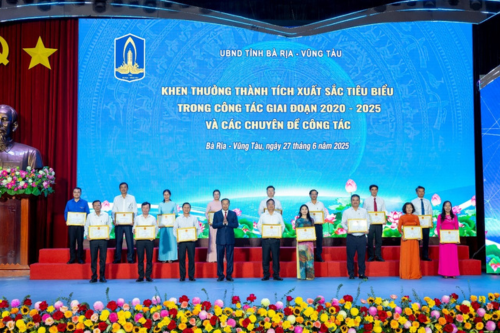
Overview of Digital Currency – Part 1: Trend of the time
21 Oct, 2021
With the explosion of blockchain technology, digital currencies have grown tremendously in the past decade. However, the global digital currency system's rapid shift has confused governments in adapting to drastic changes in people's spending and investment behavior. In that context, governments need to grasp the fundamental issues of digital currency for the monetary system and development situation in the world; Only then can we propose solutions to adapt to the development of digital currencies in the new era.

In recent years, digital currencies have developed both in terms of private money and central bank-issued coins. Important milestones include the establishment of M-Pesa in Kenya in 2007, Bitcoin 2009, Libra/Diem in 2019. Or the announcement of the digital currency of the Central Bank of China – Digital Yuan… It leads to some countries adapting quickly, but many countries are still not active in research and implementation. Vietnam is classified as a group of countries that have not been active in research but just stood outside and observed. The lack of necessary understanding of the complex technical background and concerns about the possible effects of cryptocurrencies on the economy make the response of governments passive and potentially risky…

The development of digital currency can be visualized through the development of Bitcoin, from an open-source algorithm created by an anonymous programmer. Today Bitcoin has become a cryptocurrency that has been owned by millions of people and even started to become legal currency
The concept of digital currency was introduced 46 days after the historical bankruptcy of Lehman Brothers bank, which marked the beginning of the second largest financial crisis in history. Following that, as executives and legislators tried to identify effective methods and ways to get the economy back on track, a small group of technologists decided to continue pursuing the idea of digital currency. Although cryptocurrency has been around since the 90s and thousands of new inventions have been created since then, it still has numerous things to explore.
Digital currency is a form of money that exists in computer data created to replace paper money or coins. Digital currency is divided into two main types: traditional electronic money (the unit used is still legal money issued by the Central Bank) and cryptocurrency (a completely new and independent unit of currency released by pre-programmed computer systems).
The actual digital currency revolution began with the latter's emergence (cryptocurrency), whose most successful product to date is Bitcoin, which has a significant impact on financial markets. It is even unpretentious that many researchers believe that the global financial market has completely changed when trillions of dollars have been allocated to the next-generation digital currency market. Financial transactions are automatically conducted by pre-programmed code, a world where all assets are digitized and made public “anonymously”.
Cryptocurrencies use modern cryptography and are managed by a decentralized computer system with automated algorithms in the blockchain platform. According to Satoshi (2008), cryptocurrencies have many outstanding advantages such as: (1) Security: if the number of computers operating in the nodes is large enough, the possibility of being attacked by a hacker is almost impossible, the hacker has to take control of almost 50% of the computers in the system to be able to adjust the information and data of the crypto currency; (2) Anonymity: a person's personal information is encrypted, helping to ensure privacy when joining the system; (3) Economy: payment intermediaries (such as banks) are reduced, making payment intermediaries no longer a problem in the cryptocurrency system, even in traditional contracts such as L/C ( letter of credit contract) can be replaced by a smart contract; (4) Quickness: with the improvement of global internet speed, the payment speed in the economy will increase many times; (5) Automatic anti-inflation feature: the crypto-currency system is automatically regulated in the system to avoid unnecessary generation, causing the inflation rate to rise unexpectedly without any a coordination center such as a central bank.
We have witnessed the rapid development of cryptocurrencies in recent years and newborn cryptocurrencies in a row with many outstanding features. One of the most successful and most accepted cryptocurrencies today is Bitcoin. Although there are many shortcomings in practical implementation, the Bitcoin cryptocurrency has caused a global earthquake and sparked a revolution in the monetary field. A typical example of this currency revolution in China, one of the countries with the largest economy in the world, which has officially deployed the digitization of the China Yuan Renminbi, putting into circulation a digital currency issued by the Central Bank for the transactions of consumers in some metropolis.
It is believed that cryptocurrencies could be the following form of money (after paper money) in the new era. It confuses many governments because they cannot keep up with the rapid changes of the global economy. They cannot completely deny the existence and circulation. Still, They cannot immediately accept the new digital currency because of the lack of legal basis and the power to govern the money supply in the economy. However, countries are starting to build a new era of monetary policy to accommodate the existence of cryptocurrencies. Even a wave of countries is beginning to develop their crypto-currency into a legal tender (For example, El Salvador recently recognized Bitcoin as legal currency - BT).
Facing the trend of the times, Vietnam cannot stand aside. However, like some other countries, we are confused when it comes to crypto-currency. Therefore, the Prime Minister asked the monetary authority, the State Bank, to review the legal framework for cryptocurrencies. As a result, the State Bank took the following steps to restrict all transactions related to cryptocurrency (or virtual currency) through wire transfer on the banking system, and at the same time announcing that all the supply, issuance, and use of crypto-currency are illegal acts.
These reactions will limit the development of cryptocurrencies in the Vietnamese market, but is it reasonable for us to behave like this? Does restricting the growth of cryptocurrencies in Vietnam hinder the process of entering the 4.0 economy as the Prime Minister is encouraging all economic sectors? If we deny the existence and development of cryptocurrencies, the new era of monetary policy may not keep up with the development of the world economy.
Facing this issue, we need to clarify the difference between cryptocurrency and traditional currency and its challenges. Furthermore, the behavior of the Central Bank will determine the future development of the new generation digital currency system. Will the automatic mechanism of cryptocurrencies dominate the entire economy, will it make the economy grow better or not, or will it increase instability in the absence of human intervention? All of these issues need to be explored and studied. By analyzing the cryptocurrencies superiority and their correlation with traditional currencies, and the challenges facing the existing financial system, policymakers can formulate policies to deal with a new generation of digital currency, or prepare for a Vietnamese digital currency in the future, which is almost unavoidable. See the entire research paper "Digital currencies and a new generation of global monetary system" by the authors here.
Team of authors: Dr. Le Dat Chi, MSc. Truong Trung Tai, MSc. Nguyen Trieu Dong, (UEH School of Finance).
This is an article in the series of articles that share research and applied knowledge from UEH. We cordially invite you to read the DIGITAL ECONOMIC Knowledge Newsletter 7 An Overview of Digital Currency part 2 "The milestones in the next generation of Digital Currencies”.
News, photos: Team of authors, Department of Marketing and Communication.












